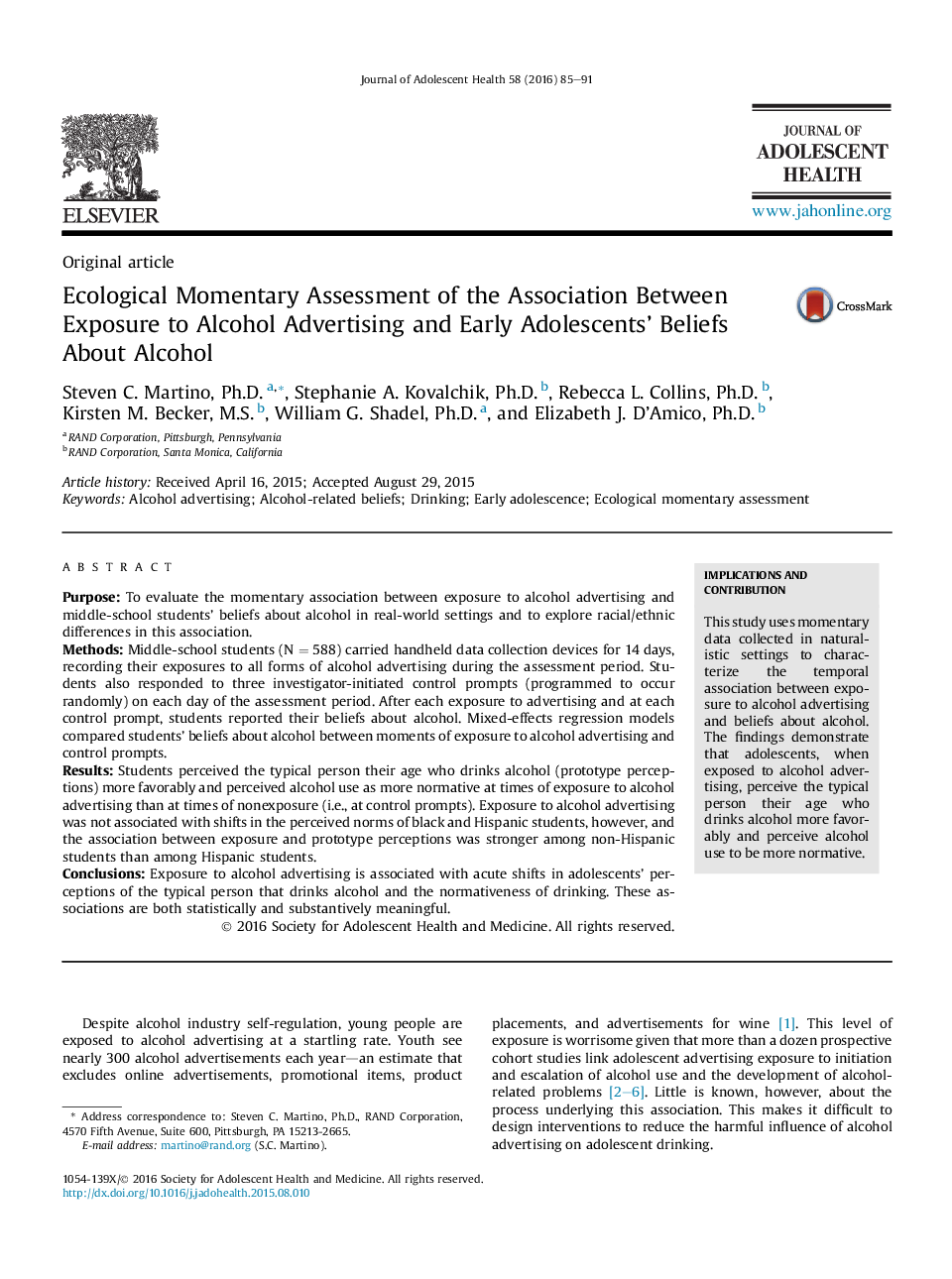| Article ID | Journal | Published Year | Pages | File Type |
|---|---|---|---|---|
| 1078519 | Journal of Adolescent Health | 2016 | 7 Pages |
PurposeTo evaluate the momentary association between exposure to alcohol advertising and middle-school students' beliefs about alcohol in real-world settings and to explore racial/ethnic differences in this association.MethodsMiddle-school students (N = 588) carried handheld data collection devices for 14 days, recording their exposures to all forms of alcohol advertising during the assessment period. Students also responded to three investigator-initiated control prompts (programmed to occur randomly) on each day of the assessment period. After each exposure to advertising and at each control prompt, students reported their beliefs about alcohol. Mixed-effects regression models compared students' beliefs about alcohol between moments of exposure to alcohol advertising and control prompts.ResultsStudents perceived the typical person their age who drinks alcohol (prototype perceptions) more favorably and perceived alcohol use as more normative at times of exposure to alcohol advertising than at times of nonexposure (i.e., at control prompts). Exposure to alcohol advertising was not associated with shifts in the perceived norms of black and Hispanic students, however, and the association between exposure and prototype perceptions was stronger among non-Hispanic students than among Hispanic students.ConclusionsExposure to alcohol advertising is associated with acute shifts in adolescents' perceptions of the typical person that drinks alcohol and the normativeness of drinking. These associations are both statistically and substantively meaningful.
